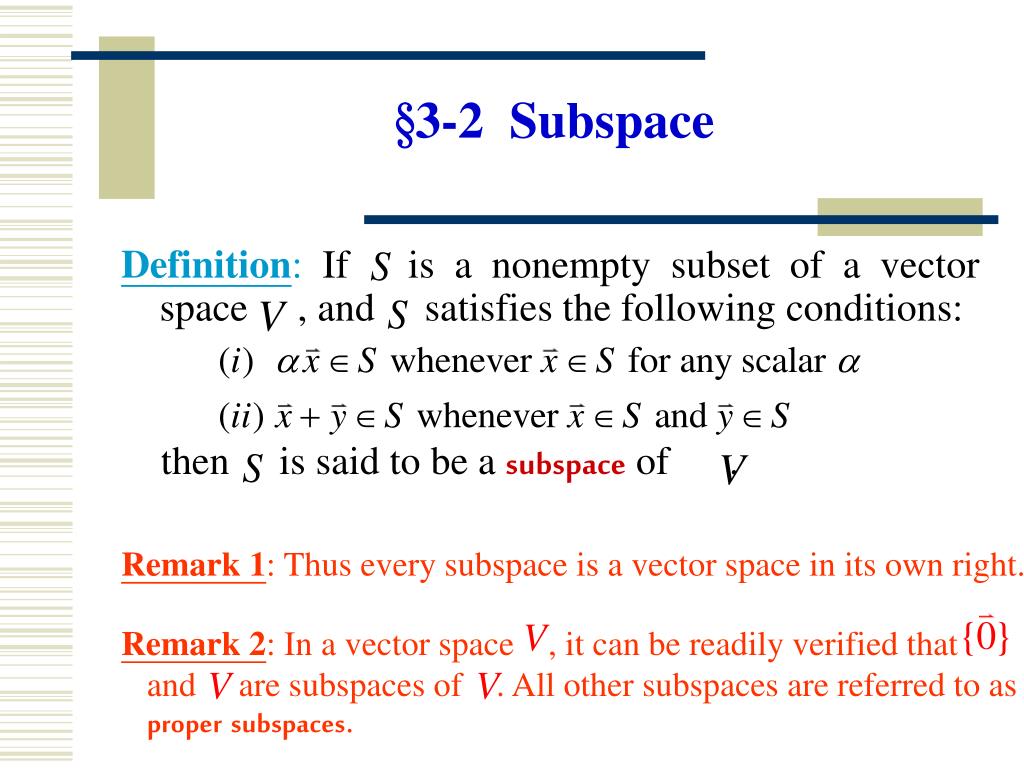

It is sometimes called Hamel dimension (after Georg Hamel) or algebraic dimension to distinguish it from other types of dimension.

the number of vectors) of a basis of V over its base field.
#Dimension of a subspace definition free#
b) Using the definition above, the coordinates uS of vector u in basis S are the constant r1, r2, r3 such that. here, however, are linear, and we will see that their dimensions are defined in a natural way. Dimension (vector space) From Wikipedia, the free encyclopedia In mathematics, the dimension of a vector space V is the cardinality (i.e. These vectors form a basis for this subspace. The dimension of the subspace V is given by the number of vectors in its basis hence it is equal to 3. In terms of formulas, it reads as follows: 2.5 Example The condition in the definition requiring that the addition and scalar multiplication operations must be the ones. The set W of vectors of the form ( x, 0) where x R is a subspace of R 2 because: W is a subset of R 2 whose vectors are of the form ( x, y) where x R and y R. This means in return, that there are no dimensions left for a non-trivial solution. Human retinal cones have three light-sensitive pigments, each with a different spectral sensitivity, and thus the encoding of. In the discussion of early color vision, we explored the way that multi-dimensional optical spectra are projected by the human visual system into a three-dimension subspace. These are three vectors, which are linearly independent (see post #5), i.e. Introduction to subspace methods Background. Not include any vectors which are linearly dependent upon. Thus the set must: Be linearly independent.

Let H be a subspace of a finite dimensional vector space V. From what I have learned so far, the concisest definition that I can provide for this concept is the following: A basis of a subspace is a set of vectors which can be used to represent any other vector in the subspace. Here we give a precise definition, and use it to find. By definition of vector space it is easy to see that for any vector u and scalar c. Since A is a finite set of linearly independent vectors and spans a subspace, A is a basis for that subspace spanned by A and thus by definition the. Description: How should we define the dimension of a subspace In the past, we usually just point at planes and say duh its two dimensional. So in general, given a problem such as this, should I first always try to calculate the general solution to the several equations given, and then make claims about basis and dimension?Īpart from #(1,0,0)#, which you have forgotten, you correctly found #(3,0,2)# and #(−1,2,0)#. If A is finite set of linearly independent vectors then the dimension of the subspace spanned by A is equal to the number of vectors in A.


 0 kommentar(er)
0 kommentar(er)
